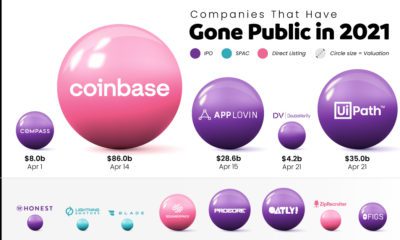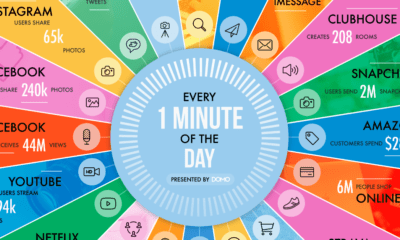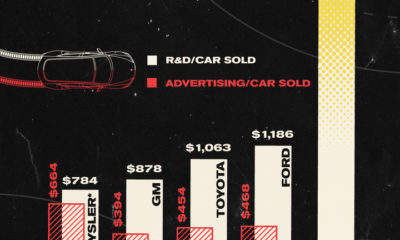When Tech Giants Go Shopping
So far, 2014 has been a big year for the tech industry in regards to acquisitions. But if you think that Facebook’s $19 billion purchase of WhatsApp was the largest, you’d be mistaken. Acquisitions are a huge part of driving the tech industry forward. They bring in new ideas, fresh talent, proprietary technologies, and much more. For investors, an acquisition can mean big money, on both ends of a buyout. Take for example Comcast’s bid for taking over Time Warner Cable earlier this year, investors in Time Warner enjoyed a 6.8% jump in their stock value. These types of deals aren’t rare; just last year, there were 2,710 mergers and acquisitions in the tech industry. The Big 4 of the tech world (Apple, Facebook, Microsoft and Google) all have made very important acquisitions, and some may even change the world. Take for example Google’s buyout of YouTube back in 2006. The video streaming site was purchased for $1.6 billion in stock. YouTube has come a long way from being famous for its entertaining gag videos like “Charlie Bit My Finger.” The platform has become a worldwide visual communication tool. It even played a role in liberating parts of the Arab world in the Arab Spring. Today, YouTube is estimated to be valued at $15 billion. Perhaps the next big game changing acquisition will be one that wasn’t mentioned in the infographic: Apple’s purchase of Beats Electronics. Apple acquired Beats for a reported $3 billion. Some speculate it wasn’t to offer superior headphones to Apple’s clientele; rather, it was for Beats’ streaming service. There may be a shift in how modern music listeners enjoys their music. Apple’s iTunes’ sales have been slowly dwindling as of late, album sales are down 15% this year. The future may lie in subscription based streaming services, something Beats has a head start in. We’re only half way through 2014 and we have already seen major players shake up the tech industry through mergers and acquisitions. I am sure that I’m not alone when I say I’m excited to see what’s in store for the remainder of the year. Original infographic from: FinancesOnline.com on But fast forward to the end of last week, and SVB was shuttered by regulators after a panic-induced bank run. So, how exactly did this happen? We dig in below.
Road to a Bank Run
SVB and its customers generally thrived during the low interest rate era, but as rates rose, SVB found itself more exposed to risk than a typical bank. Even so, at the end of 2022, the bank’s balance sheet showed no cause for alarm.
As well, the bank was viewed positively in a number of places. Most Wall Street analyst ratings were overwhelmingly positive on the bank’s stock, and Forbes had just added the bank to its Financial All-Stars list. Outward signs of trouble emerged on Wednesday, March 8th, when SVB surprised investors with news that the bank needed to raise more than $2 billion to shore up its balance sheet. The reaction from prominent venture capitalists was not positive, with Coatue Management, Union Square Ventures, and Peter Thiel’s Founders Fund moving to limit exposure to the 40-year-old bank. The influence of these firms is believed to have added fuel to the fire, and a bank run ensued. Also influencing decision making was the fact that SVB had the highest percentage of uninsured domestic deposits of all big banks. These totaled nearly $152 billion, or about 97% of all deposits. By the end of the day, customers had tried to withdraw $42 billion in deposits.
What Triggered the SVB Collapse?
While the collapse of SVB took place over the course of 44 hours, its roots trace back to the early pandemic years. In 2021, U.S. venture capital-backed companies raised a record $330 billion—double the amount seen in 2020. At the time, interest rates were at rock-bottom levels to help buoy the economy. Matt Levine sums up the situation well: “When interest rates are low everywhere, a dollar in 20 years is about as good as a dollar today, so a startup whose business model is “we will lose money for a decade building artificial intelligence, and then rake in lots of money in the far future” sounds pretty good. When interest rates are higher, a dollar today is better than a dollar tomorrow, so investors want cash flows. When interest rates were low for a long time, and suddenly become high, all the money that was rushing to your customers is suddenly cut off.” Source: Pitchbook Why is this important? During this time, SVB received billions of dollars from these venture-backed clients. In one year alone, their deposits increased 100%. They took these funds and invested them in longer-term bonds. As a result, this created a dangerous trap as the company expected rates would remain low. During this time, SVB invested in bonds at the top of the market. As interest rates rose higher and bond prices declined, SVB started taking major losses on their long-term bond holdings.
Losses Fueling a Liquidity Crunch
When SVB reported its fourth quarter results in early 2023, Moody’s Investor Service, a credit rating agency took notice. In early March, it said that SVB was at high risk for a downgrade due to its significant unrealized losses. In response, SVB looked to sell $2 billion of its investments at a loss to help boost liquidity for its struggling balance sheet. Soon, more hedge funds and venture investors realized SVB could be on thin ice. Depositors withdrew funds in droves, spurring a liquidity squeeze and prompting California regulators and the FDIC to step in and shut down the bank.
What Happens Now?
While much of SVB’s activity was focused on the tech sector, the bank’s shocking collapse has rattled a financial sector that is already on edge.
The four biggest U.S. banks lost a combined $52 billion the day before the SVB collapse. On Friday, other banking stocks saw double-digit drops, including Signature Bank (-23%), First Republic (-15%), and Silvergate Capital (-11%).
Source: Morningstar Direct. *Represents March 9 data, trading halted on March 10.
When the dust settles, it’s hard to predict the ripple effects that will emerge from this dramatic event. For investors, the Secretary of the Treasury Janet Yellen announced confidence in the banking system remaining resilient, noting that regulators have the proper tools in response to the issue.
But others have seen trouble brewing as far back as 2020 (or earlier) when commercial banking assets were skyrocketing and banks were buying bonds when rates were low.














